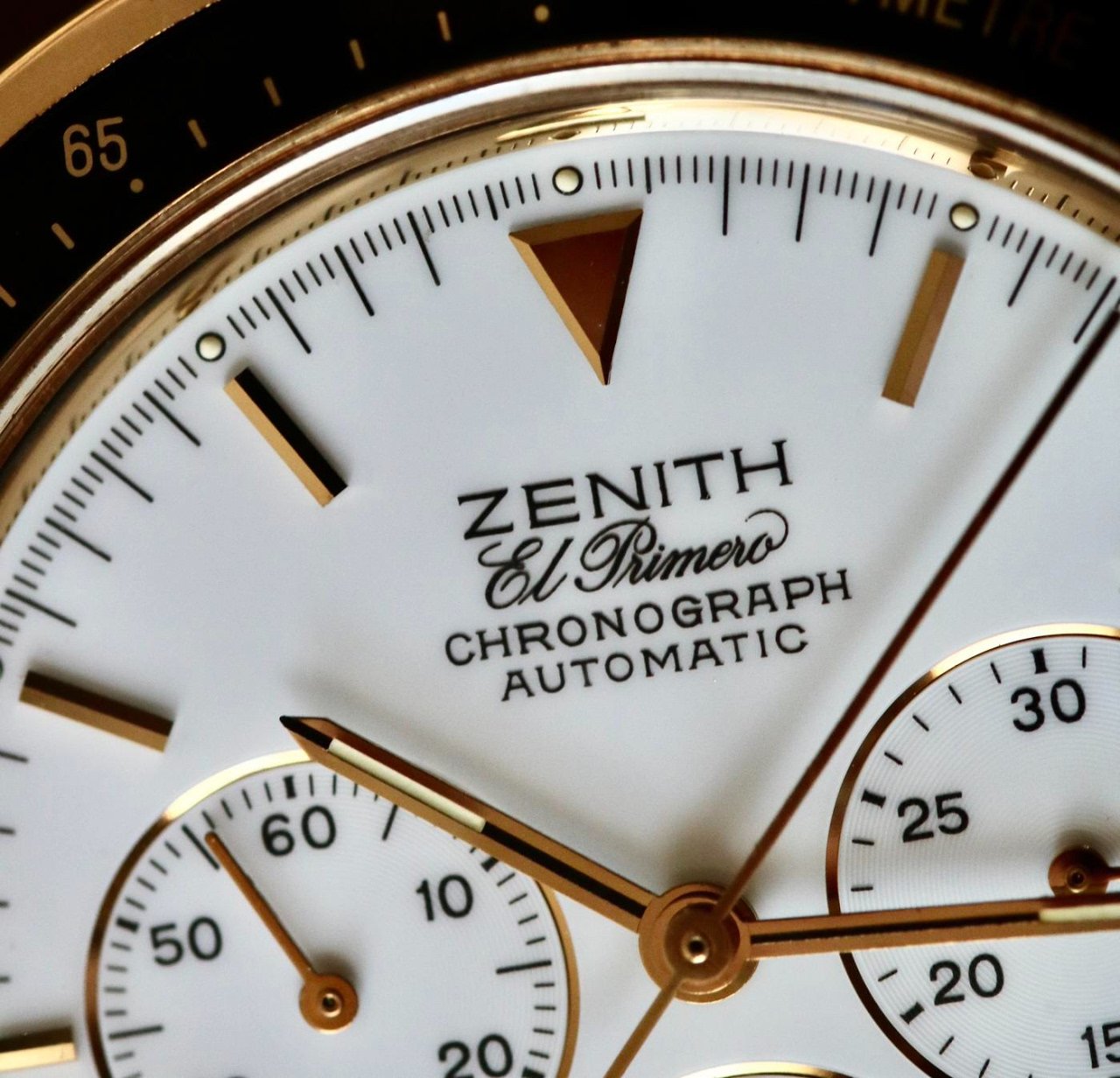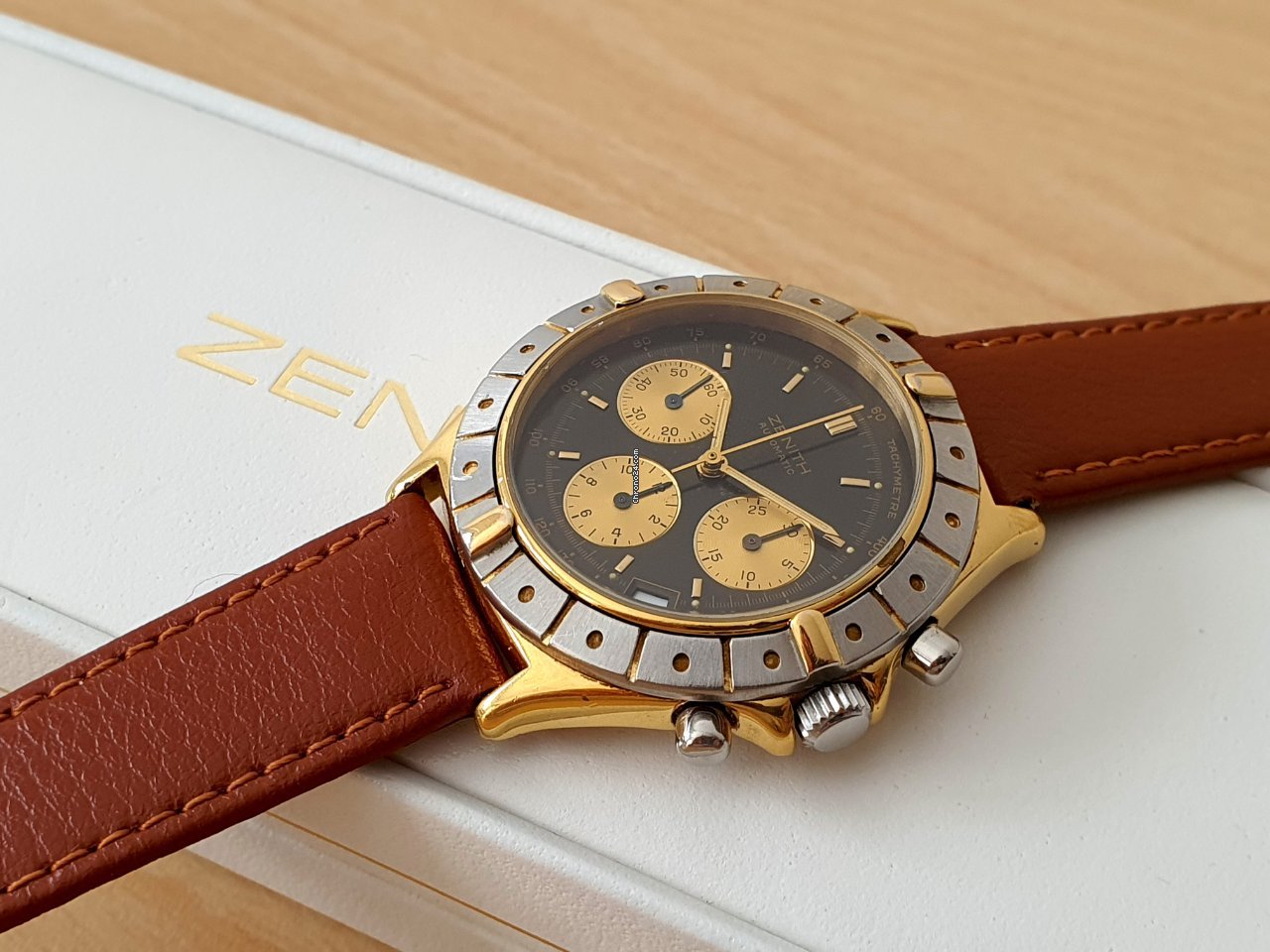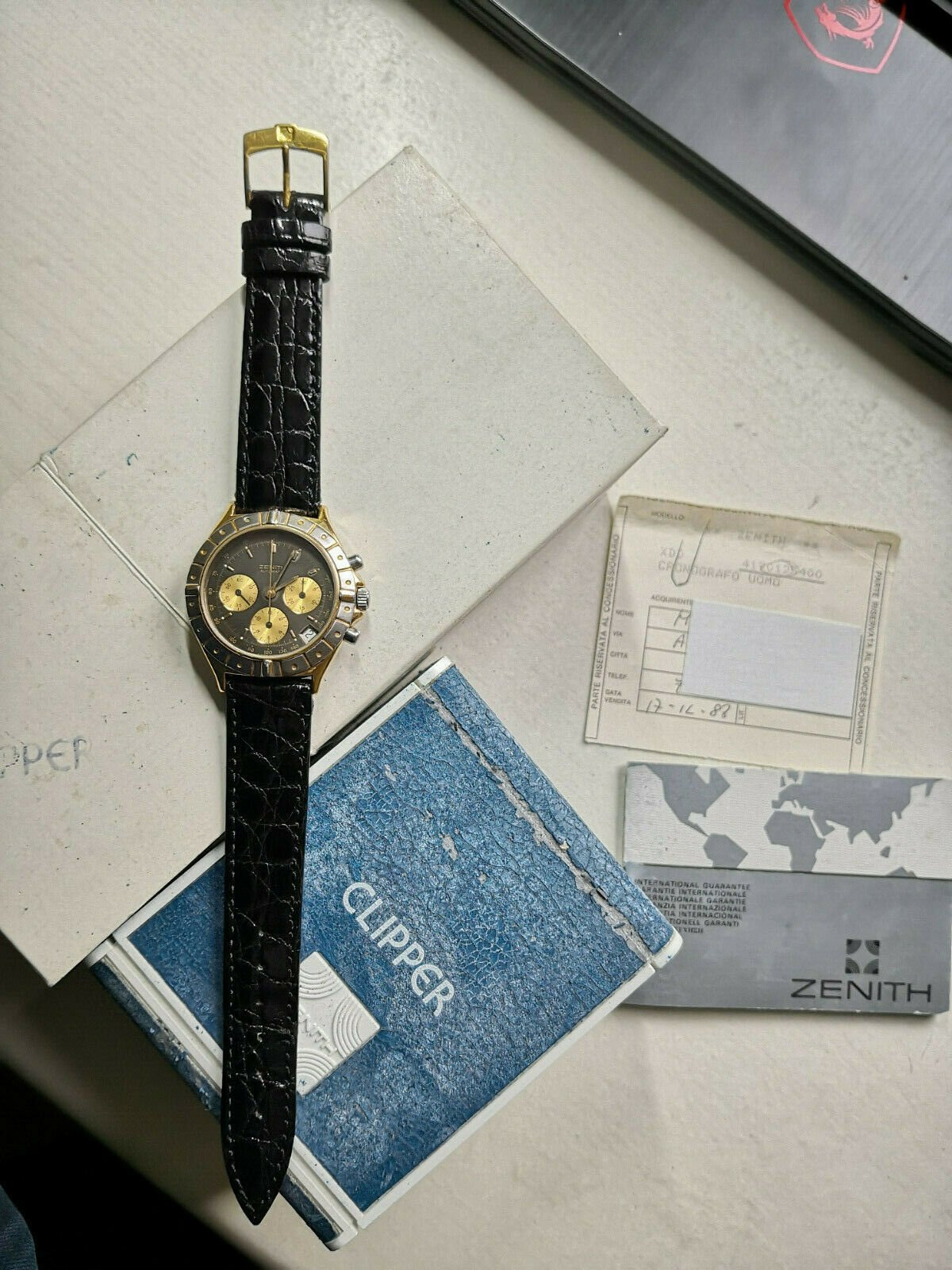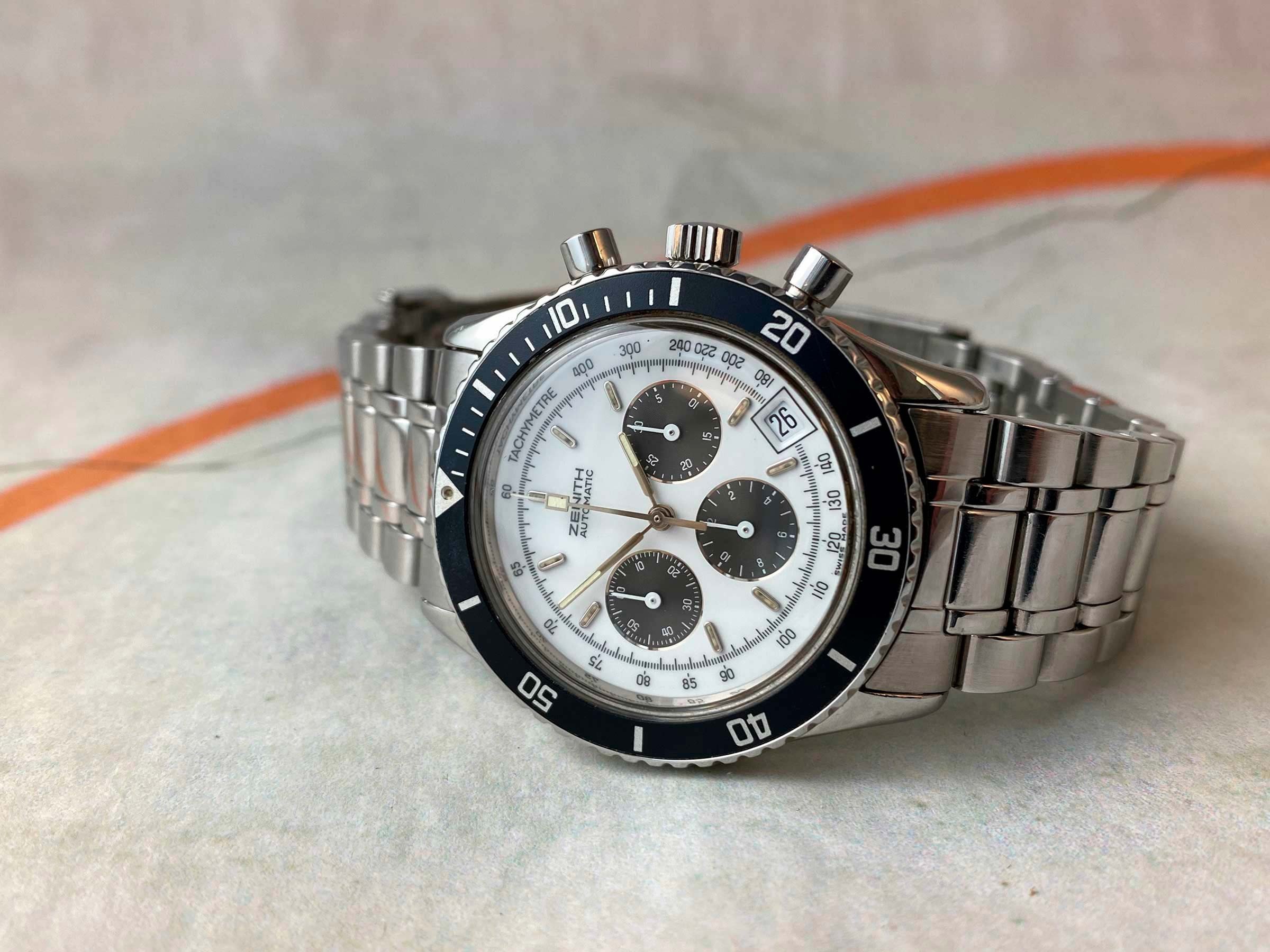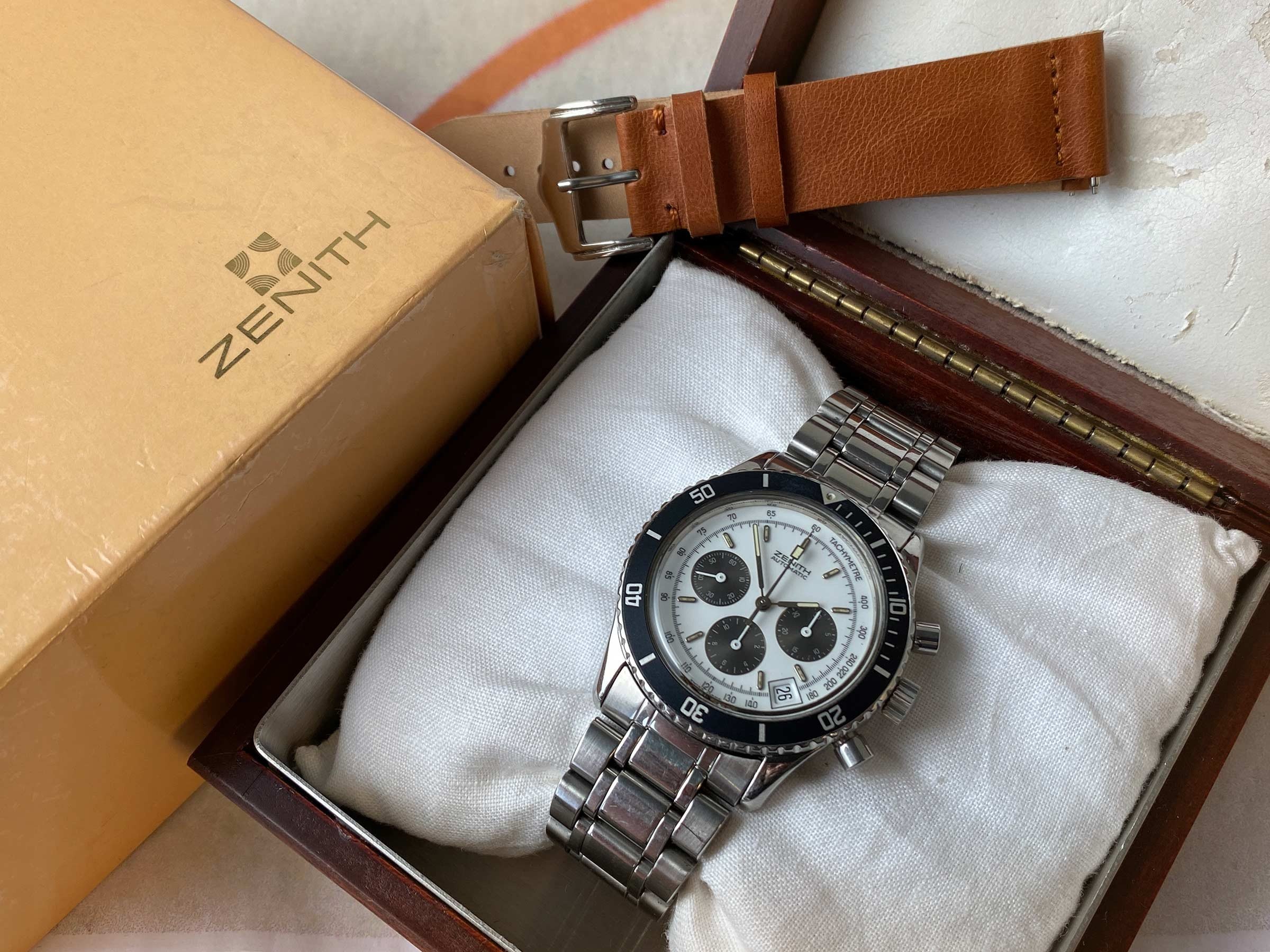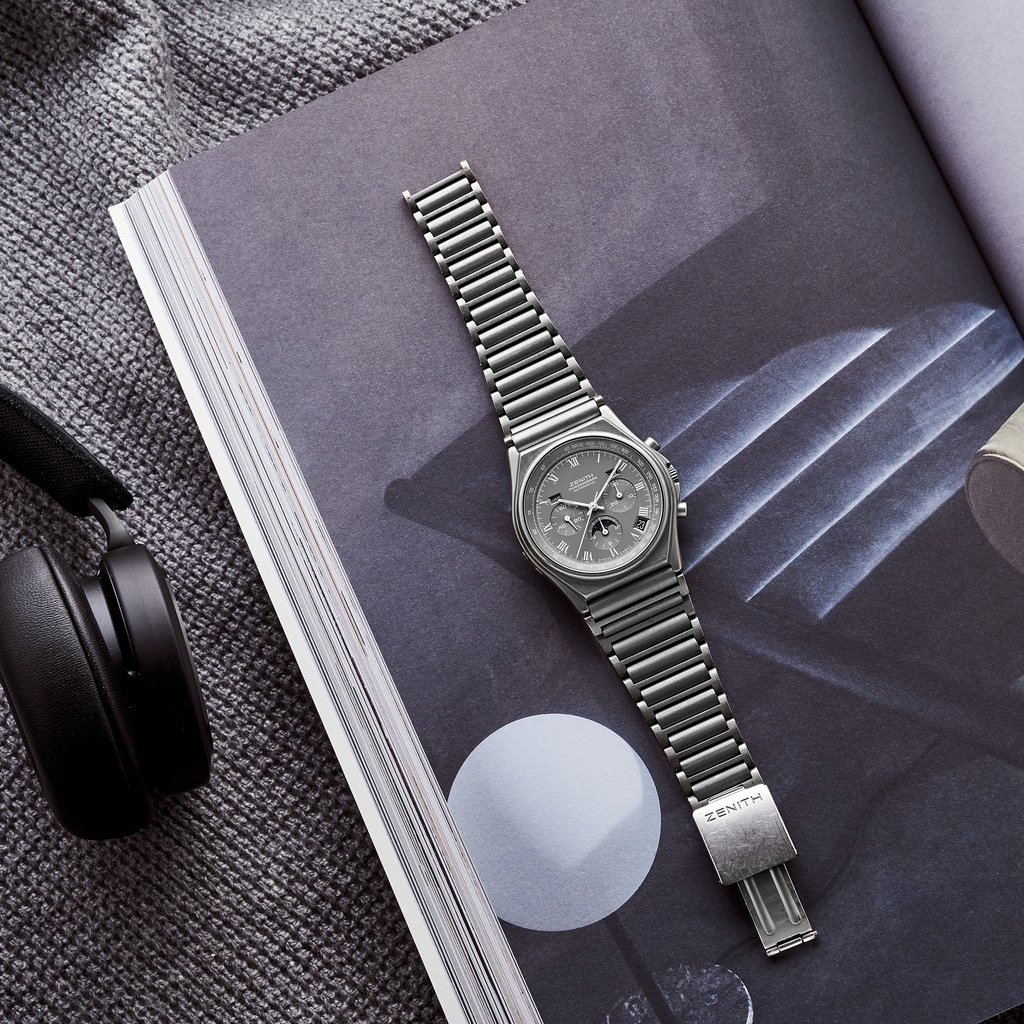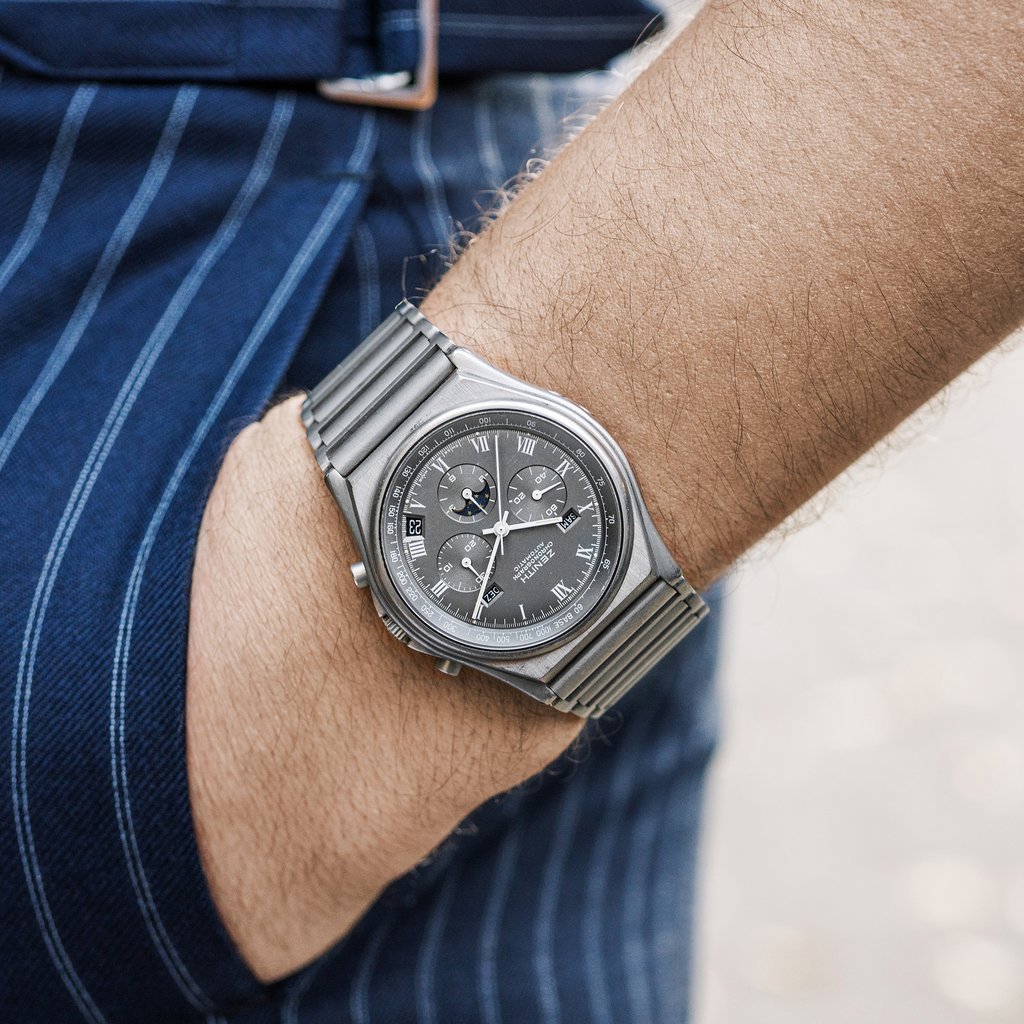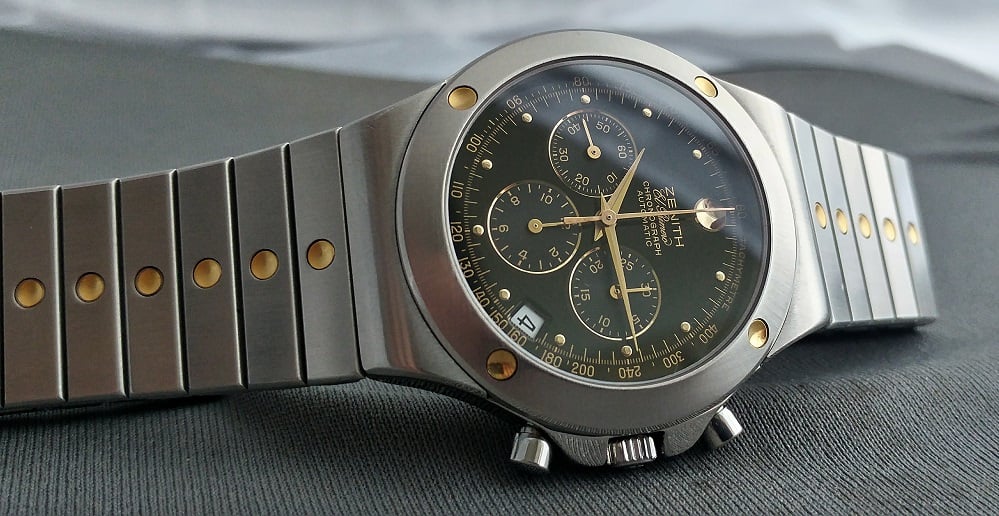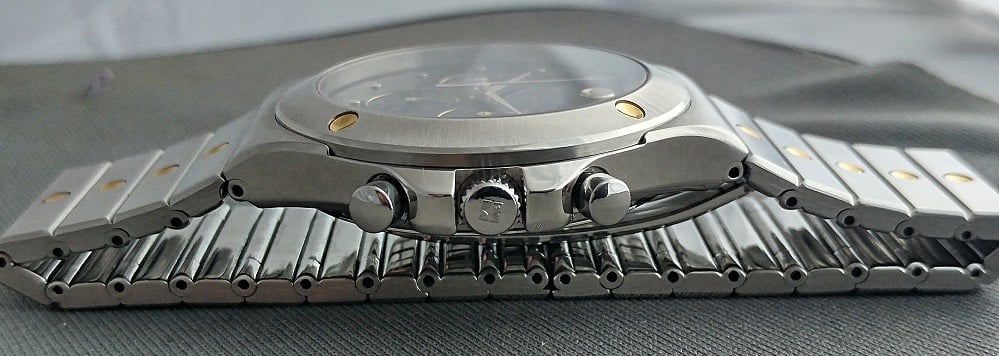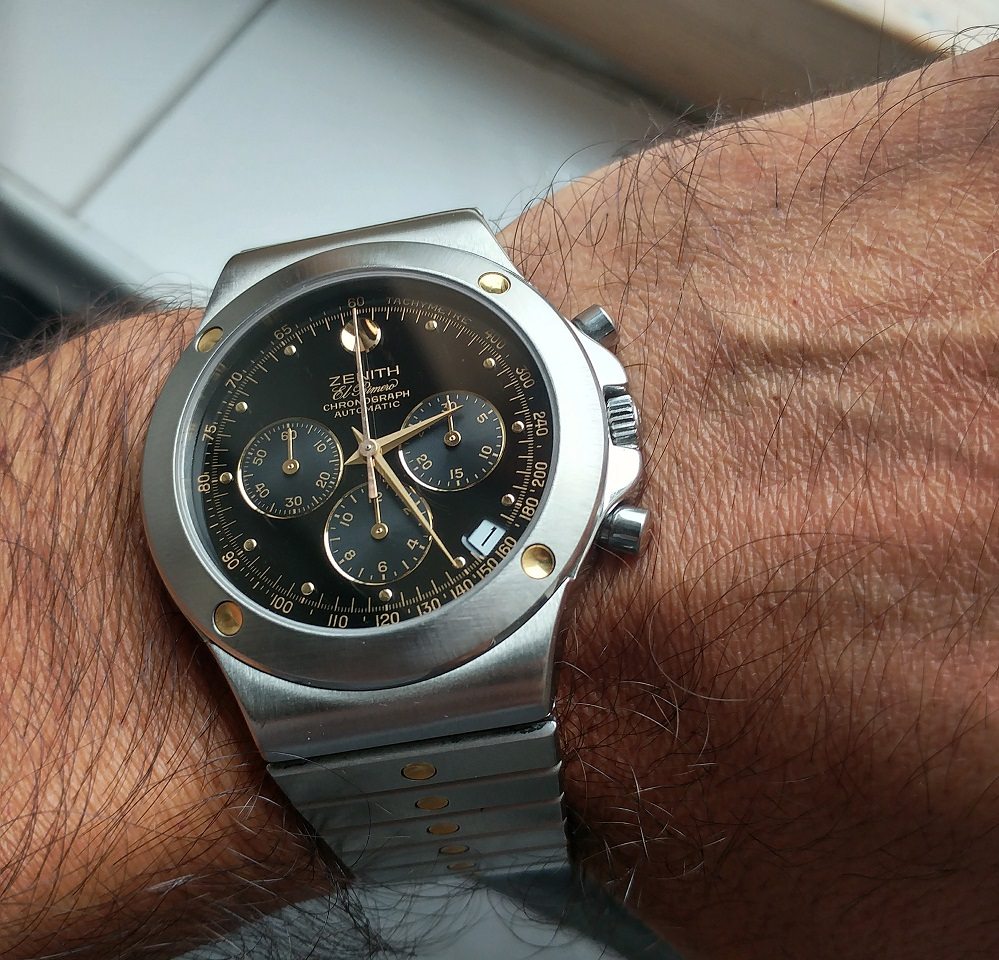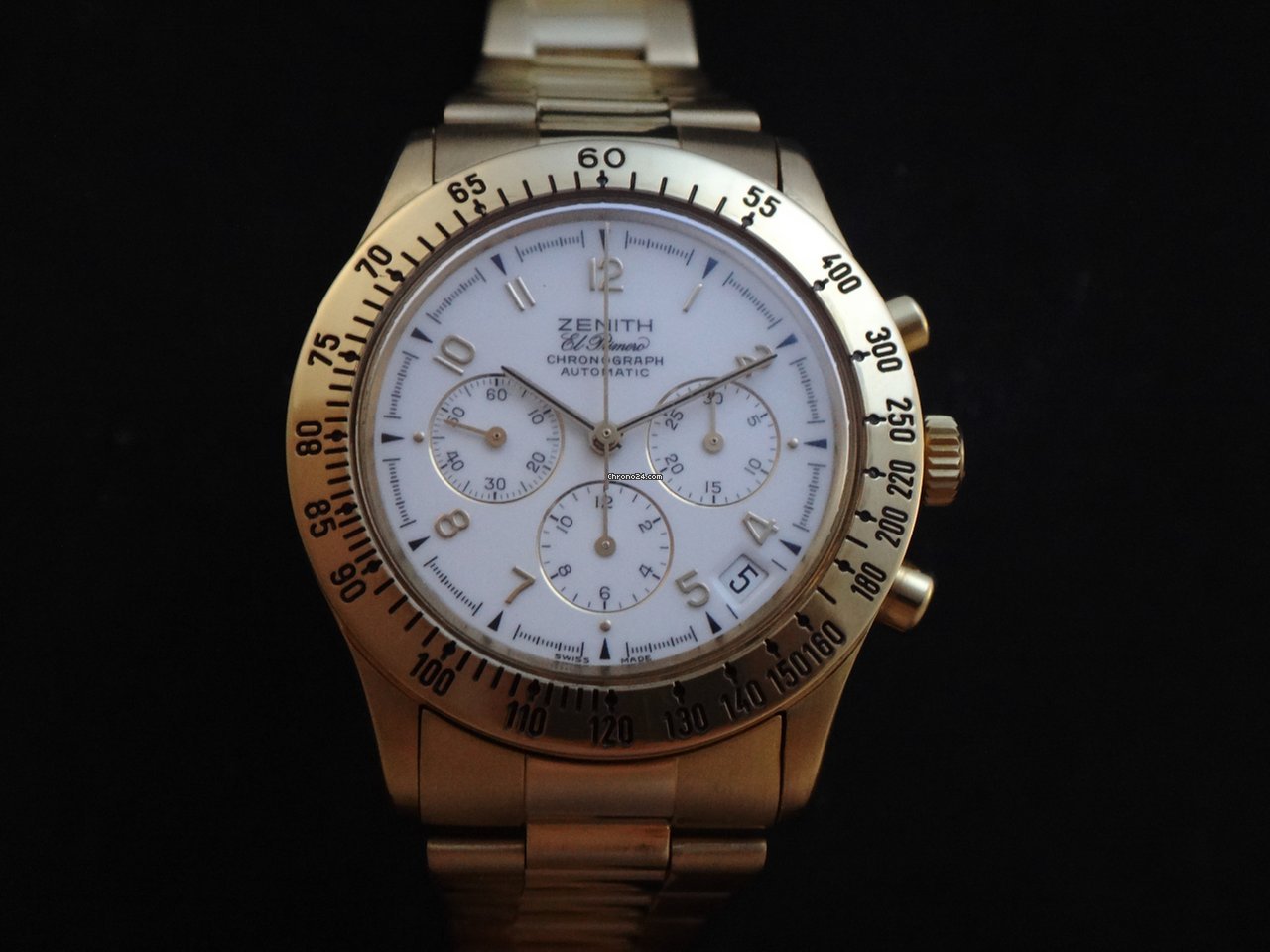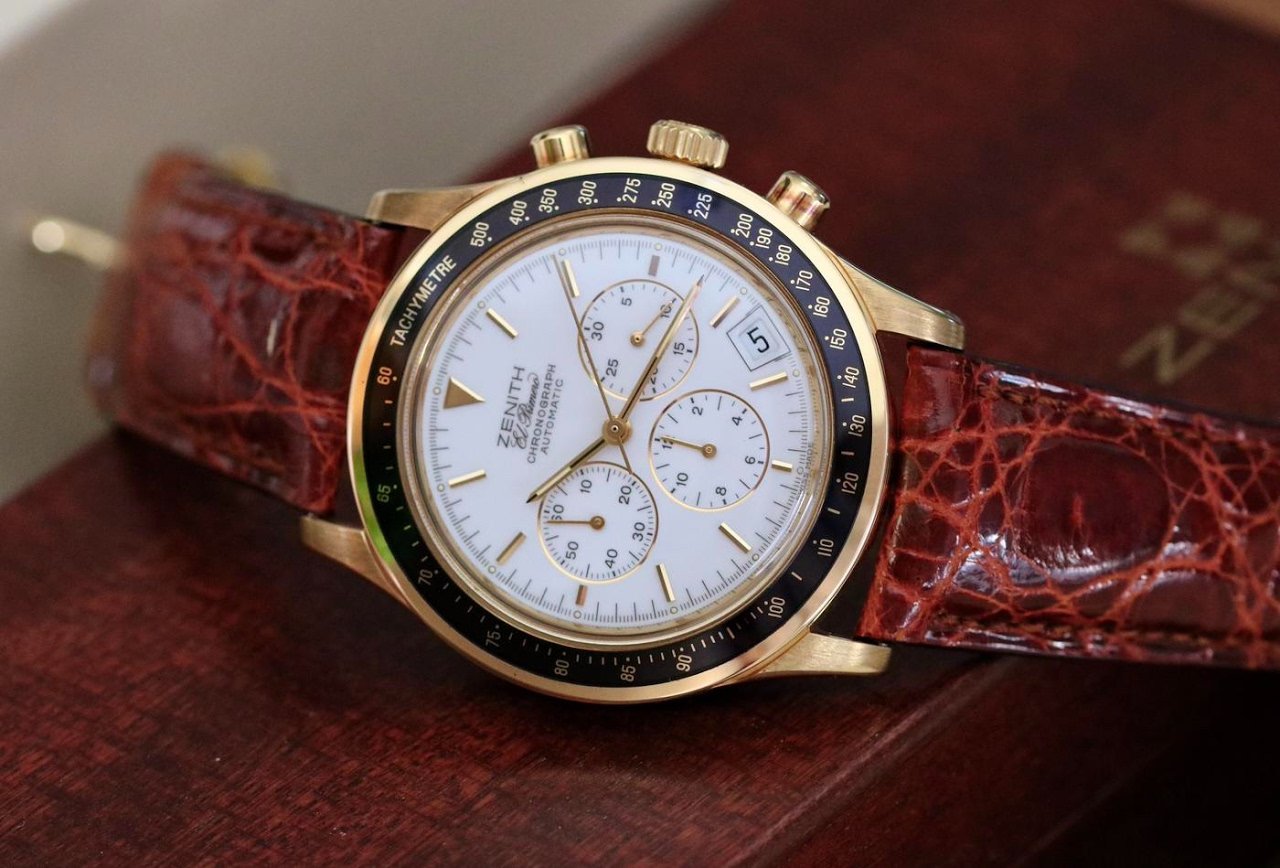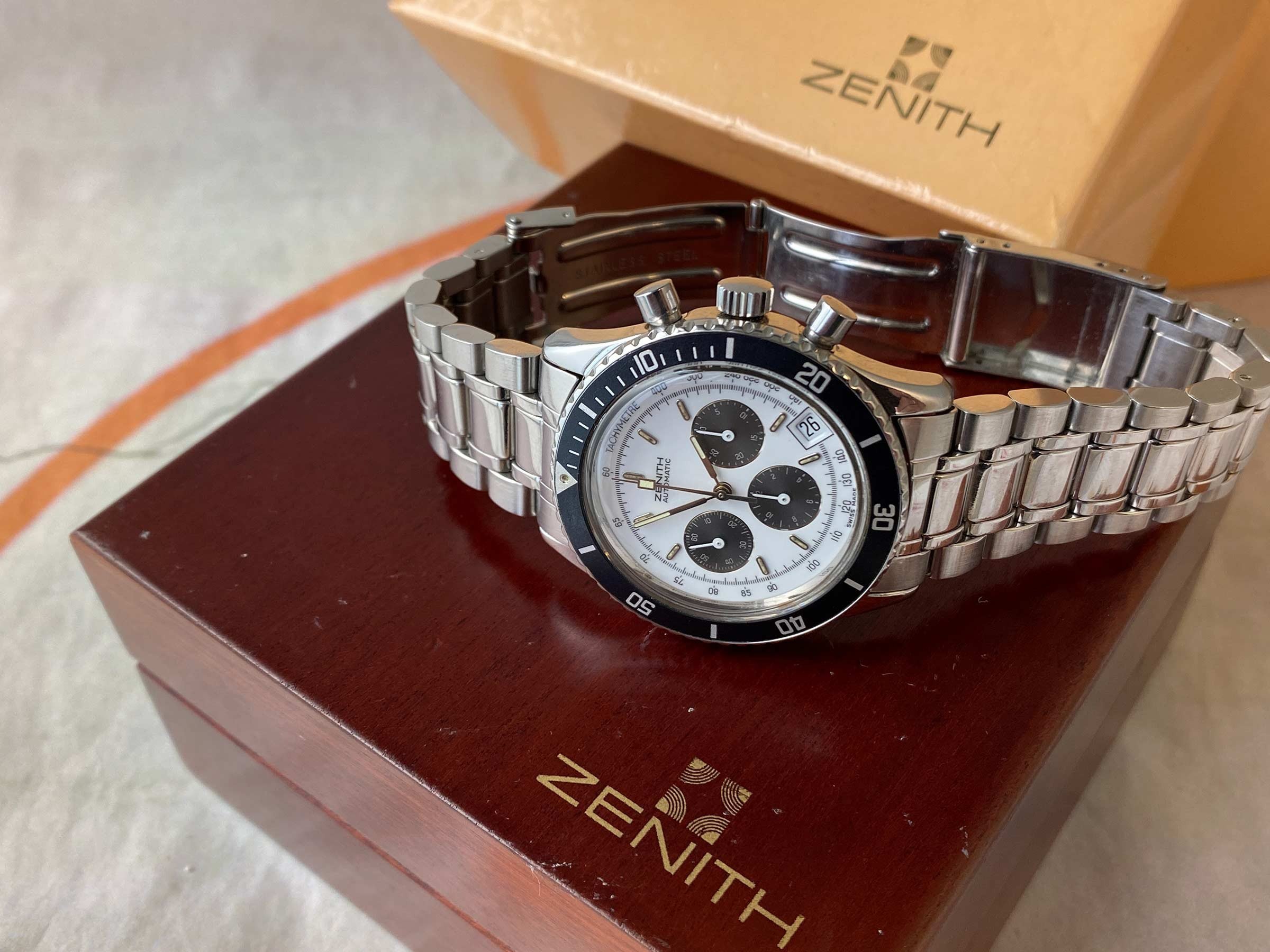Buying Guide: The Best Zenith Watches From The 1980s
We like to talk about vintage watches a lot within the Fratello team. Though most of what we write about is largely focused on the most recent releases and developments, for many of us, a lot of the fun can be found in the sometimes weird and often wonderful world of vintage watches. It’s a world full of history, remarkable watches, incredible stories, and quirky details. It inspired us to come up with a series of articles focusing on the best watches per decade from a select group of brands. Some of them are priceless, some of them still affordable. In this installment, we will take a look at the best Zenith watches from the 1980s.
While the 1970s were a decade filled with tremendous change in the watch industry, the 1980s showed the fruits of that change. When Seiko started the quartz revolution, most Swiss brands never predicted the enormous long-term effects on the industry. This is also why a lot of Swiss brands ended up in trouble, often with disastrous results. In the 1980s, quartz was king, which is reflected in some of this week’s picks.
When it comes to style and design, the eighties were a special time. Often perceived as a decade with a distinct lack of style, or rather an abundance of tacky style and designs, the 80s were often frowned upon. But, over time, and with the benefit of hindsight, we have seen an increasing appreciation for some of the more unique watches from this era. So as you might imagine, there are plenty of good things to discover if you are looking for a vintage piece from the 1980s.
Zenith in the 1980s
The 1980s for Zenith were tough. After the brand stopped production of the El Primero movement in 1975, the focus shifted to producing quartz watches. Zenith would use quartz movements from ETA and Citizen to power their watches. Most of you will know the story of Zenith employee Charles Vermot that hid all the important presses, cams, operating plans, cutting tools, and manufacturing plans that were necessary to produce the El Primero movement. By 1976 most of the staff was let go off, and Zenith was doing really bad. Two years after, Zenith Watches SA was sold by its American owners to three Swiss manufacturers.
One of them was Paul Castella, a Swiss entrepreneur interested in making sure there were jobs in the region and saving the Swiss industry from completely collapsing. In his mind, Zenith could play a crucial role with its long history in watchmaking. But it took until the early 1980s before things got kickstarted by a request from Rolex. The revival of mechanical watches led to the development of the new Rolex Daytona, and the brand turned to Zenith for its El Primero movement. Rolex placed a large order for El Primero movements, which got the brand back in business. As a result, Zenith also started producing their own El Primero-powered models by the late 1980s. It makes finding five stand-out Zenith watches from the 1980s a bit of a challenge but a fascinating search. With some amazing watches to focus on in this list.
The Entry Point — Zenith Clipper El Primero Chronograph ref. 19.0122.400
The first watch on the list is quite an extravagant one that totally fits the aesthetic of the 1980s with its bi-color case. The Zenith Clipper El Primero ref. 19.0122.400 has all the hallmarks of an extravagant eighties design. The watch features an 18k gold case with a stainless steel bezel. As you can see, the bezel actually gives the watch a lot of its character. While it definitely is a make-or-break element, the overall aesthetic definitely fits the iconic 1980s chronographs that made it big at the time. The watch was first introduced in 1988 and was offered in multiple configurations. The introduction model featured a black lacquered dial with white sub-dials and white baton-style hands. Later models featured a different configuration with a black lacquered dial and gold sub-dials, and gold hands as pictured.
Inside the watch, Zenith used the new El Primero Caliber 400. It is the evolution of the old El Primero 3019 that was produced until 1975 when Zenith watchmaker Charles Vermot decided to hide all the important documentation and tools and machinery when production of the El Primero movements was halted by management. The new version of the movement operates at 36,000vph, features 30 jewels, and has a power reserve of 50 hours.
Flying under the radar
The Zenith Clipper El Primero is not a watch that has become highly popular with collectors, and it’s also why you won’t find a lot of information on the model line. It’s not hard to guess that its looks play a big role in that. Having said that, if you like the style of the 1980s and you would like to add an affordable El Primero chronograph to your collection, this might be the perfect option. Due to the fact that it is not a popular model, prices have remained incredibly affordable.
You might have to search for one in good condition, though. But prices for either of the models are roughly between €750–€1,500. That is not a lot of money for the watch that you are getting. But you would have to make this your ’80s statement piece of your collection. And as a kid that grew up in the 1980s, I can relate to all the gold and steel magic created in the eighties. I actually have developed a soft spot for watches from that era, even when their looks are divisive, to say the least. And that’s what this Clipper is.
My pick — Zenith El Primero De Luca ref. 01.0043.400
The most well-known Zenith line of watches from the late 1980s is, without a doubt, the De Luca line. The line was officially called “Les Classiques,” but Zenith named the watches “De Luca” after the Italian Zenith agent at the time who created the watches. The story goes that De Luca was frustrated with the Zenith collection and proposed this model to be produced. For the design, De Luca used influences from the past. The design of the watch was inspired by Zenith’s legendary manual-wound 146hp chronographs from the 1960s. The De Luca line has become very popular with collectors as it takes design cues from the past and combines it with the newer El Primero Caliber 400. As we will find out, there have been several executions of the De Luca series, so definitely do some required reading if you love this watch.
The De Luca line was produced between 1988 and 1996. In those years, Zenith produced two different “regular” series and a small number of special models. The series “De Luca I” and “De Luca II” were actually produced next to each other. The biggest difference was the evolution in the design of the dial of the second series that was introduced in 1990 and therefore is not eligible for this list. My pick for this list is the first model De Luca produced with two dial executions — a panda and a reverse panda dial. My usual pick would be the reverse panda dial because I prefer black dials. But the regular panda dial actually has an overall charm that I really like, and that’s why I picked it.
Switching El Primero movements
The Zenith El Primero De Luca ref. 01.0043.400 was produced in 1988 and 89. A total of 790 pieces of the panda dial version was supposedly produced in those two years. Zenith produced 1,025 pieces of the reverse panda dial version. Both watches feature a 40mm stainless steel case that is 13.6mm thick with a lug width of 22mm. The lug width is substantial, which makes it very much suited for a nice strap as well. This series of sports chronographs was the first Zenith model line that featured the new El Primero Caliber 400. The brand started out using the remaining stock of the El Primero 3019 PHC. When the old stock was used, Zenith switched to the new Caliber 400.
This specific model De Luca features a white dial with recessed black subdials and nice contrasting white hands. The dial also features a tachymeter printed in black that is interrupted by the date window at 4:30. Furthermore, the watch features a black aluminum bezel insert with a 60-minute diving scale. But the most important detail is the “El Primero” logo was not used on the first models. Another difference is that the black dial version came with dauphine-style hands. This white version, however, came with baton-style hands. I prefer the dauphine hands because they add more character. Over time the De Luca has become a popular watch with collectors. This is why prices for a De Luca are between €5k–€9K overall. This specific version goes between €6K–€9K, depending on the condition.
Money is no object #1 —Zenith ‘Port Royal’ El Primero Chronograph ref. 95.100.418
The Zenith Port Royal El Primero ref. 95.100.418 is a glorious statement of mid-eighties bliss. To make it an even bigger statement of ’80s luxury, a full gold version would be your way to go. Zenith actually made the watch in full gold as well, so it’s an option. I picked this version, however, because it was one of the first full titanium watches from any of the Swiss brands. Last week we looked at the IWC Porsche Design Titan Chronograph that paved the way, but this was definitely one of the first that came after. Zenith offered this titanium version with this grey dial, a black dial with red accents, and a white dial with red accents. I love that last version because the white dial version often comes with a dial that changed color to a beautiful aged cream color.
The combination of the monochromatic looks and the dial that uses Roman numerals does it for me, though. But let’s find out more about the model itself. The watch features a 40.5mm tonneau-shaped case that is 12.5mm thick. The case is made of titanium with a circular bezel and a 22mm tapered titanium bracelet. The overall style of the case and the dial does remind of the brilliant Ebel 1911 Sport Classic Chronograph that Don Johnson famously wore in Miami Vice. Obviously, there is a connection between the two brands. In 1982 Ebel started buying leftover El Primero stock for their watches. Looking at the design of the 1911 and this Port Royal, they definitely have this typical ’80s vibe that is a testament to its time.
Most complicated El Primero
This specific model series is special because it featured the most complicated El Primero movement the brand had ever made. Zenith used the automatic El Primero 3019 PHF movement. It’s a modified version of the basic El Primero 3019 PHC movement that features a full calendar and a moon phase indicator. As you can see, the day, month, and date are displayed in black with white numerals to contrast nicely with the grey dial. The date is in the usual position for the El Primero movements. The day and month indicators are placed at 2 and 10 o’clock. Overall the layout is not too cluttered, making it easy to navigate the dial. A remarkable detail is that Zenith did not use the El Primero name on the dial nor the Port Royal name.
As mentioned, Zenith released this Port Royal model in a variety of configurations. Besides the titanium model, the brand also released a full yellow gold version with gold hands and numerals. On top of that, there is a bi-color version in titanium and gold. It features a titanium case and bracelet with gold pushers, a gold bezel, and gold center links. That sure is a ballsy statement. This used to be Zenith’s top-of-the-line watch, and with the low production numbers, it is not that easy to get. Especially the titanium models do not show up for sale all the often. The prices are roughly between €5K and €8K when they do, depending on the condition. Which is not cheap, but considering the special movement, the material used, and the statement piece it is, it’s definitely a special watch.
Money is no object #2 — Zenith Pacific El Primero ref. 59.0010.400
The next watch on this list stands out immediately because of the gold dots on the bezel, dial, and bracelet. Therefore the Zenith Pacific El Primero ref. 59.0010.400 reminds me of the Movado Museum Watch, which is not a coincidence. In the 1970s, Zenith actually produced the Museum Watch, so the connection is definitely there. Zenith actually produced their Modern Art line of watches that was basically the brand’s modernized interpretation of the Museum Watch. The Pacific “Golden Dot” models, which this first pick is part of, were the successor to the Modern Art line. Overall it’s a more sporty line of watches with this El Primero Chronograph not only as of the sportiest but also the best looking.
The Zenith Pacific El Primero was produced from 1989 to 1991. Zenith produced 3,225 pieces of this perfect example of late ’80s design. The watch is characterized by its 40mm stainless steel case with an integrated steel bracelet. The steel bracelet actually has an engraving of the “Zenith Pacific” name on two links. It’s a bold feature that won’t let you forget what the watch is you are wearing. The gold dots on the bezel and the bracelet obviously attract a lot of attention. For most people, those would be the love-it-or-hate-it element of the watch. But if you can look past this, you will find a very well-designed black dial with gold elements. Overall it looks very well-balanced and classy. Okay, maybe a bit over the top. But I actually like it.
Combining style and substance
Inside the 40mm case, you will again find the Zenith El Primero 400 movement. The new Caliber El Primero 400 would be first introduced in the De Luca series, but soon after, it would power a string of new releases, including this one. The column-wheel chronograph features the famous layout with three sub-dials and the date indication at 4:30. The placement of that date window has always felt a bit weird, but Zenith has managed to integrate it well over the years. For this release, however, it really stands out because of its contrasting white color. I would have liked it better if it were executed in black with gold numerals. It just would have fit the stylish dial a bit better.
The Zenith Pacific El Primero Chronograph ref. 59.0010.400 is actually one of those interesting watches that flies under the radar. The style might be over the top for many watch enthusiasts. But I like the watch a lot because it is a glorious statement of the late ’80s, early ’90s style. I particularly love the dial design because it feels perfectly balanced. Additionally, the black and gold combo is always a winner. Underneath the glitz and glamour of its aesthetics, you will find one of the most respected chronograph movements in history that make this an even more interesting watch. You can find a Zenith Pacific El Primero Chronograph for roughly €2,5K–€5K depending on its condition, a bargain — if it fits your style, of course.
Money is no object #3 — Zenith Bolognese El Primero Chronographs
The last pick for this list is not just one watch but a series of watches. For a long time, not a lot was known about a series of 18k gold El Primero chronographs produced between the mid-’80s until the early ’90s by a small number of goldsmiths from Bologna in Italy. The famous book Zenith — Swiss Watch Manufacture Since 1865 by Manfred Rössler only mentions the watches briefly and shows one of the produced models. But there is a whole series of gold El Primero chronographs that were produced. Thanks to a small number of Zenith collectors, we were able to find out a bit more about this series of watches. The post created on Watchuseek by watchhunterandcollector gives a great deal of information and has plenty of images to get an idea of how incredible these watches are.
These Italian-produced Zenith El Primero chronographs are a series that has a reference number starting with “06.” It’s why they are referred to as the Italian El Primeros or the “06s.” It is commonly known that Zenith has always been a popular brand in Italy. It’s why we have seen the release of iconic models like the A. Cairelli chronographs from the 1960s and the De Luca models that I covered in this article. When Rolex ordered the El Primero movement for their new Daytonas, Zenith was once again catapulted into the spotlight in Italy. The reason why several Italian goldsmiths started producing a series of gold El Primero chronographs is not officially known. But if you read the thread on Watchuseek, an Italian forum member gives a plausible reason.
A great variety
Bologna has one of the best and most prestigious universities in all of Italy. Traditional graduation gifts would be gold watches. So with the rise in popularity of the Zenith brand amongst young people, the demand for Zenith El Primero chronographs was high — in this case, especially as a graduation gift. It seems to be why Italian goldsmiths produced a series of chronographs in very small numbers with the OK from Zenith. The watches are marked CTRD BY ZENITH, indicating that Zenith approved of the production. The first is Andreoli Guglielmo, who made by far the majority of watches marked 50 BO. The second is Lucio Zucchini marked 218 BO. Together they created a wide variety of different models. On top of that, some of the details on some of the watches are truly amazing.
The gold cases are often incredible with really deep engravings. Additionally, some of the models feature a bakelite bezel and white enamel dials. Once again, not all of the models feature the El Primero name on the dial. Most watches were equipped with the El Primero Caliber 400, but a small number were equipped with the El Primero 40.0 movement. I suggest you read the amazing story of these Italian El Primero chronographs on Watchuseek. There are always a couple of these models for sale. Prices are obviously hard to define but expect to pay between roughly €5K and €10K for one. Considering some of the designs, the gold cases, their level of detail, and the movements, that is a true bargain. This, for me, is one of the great watch stories of the 1980s.
Final Thoughts
There you have it. A list of five remarkable Zenith watches from the ’80s. For once, I can say that there are not plenty more watches that could have been on this list. As Zenith was just starting production back up in the 1980s, there are not many more great watches from the decade. However, if you look at these five watches, it’s clear that Zenith created some amazing watches in the eighties. These pieces stood out because they marked the return of the legendary El Primero movement and a renewed popularity for the brand.
As with all the other brands, it is important to do your homework. The world of vintage Zenith watches also suffers from fake or Franken pieces. Next, you have to keep in mind that many vintage pieces were serviced over the decades, and parts have been replaced. That’s why it is good to do some required reading.
A lot of crucial historical info has been documented, though. Two nice books to start with are Zenith — Swiss Watch Manufacture Since 1865 and El Primero – Der Chronograph (in German), written by Manfred Rössler. On top of that, there is plenty of information available to read online. Jeff Stein’s On The Dash has a great cheat sheet for all the El Primero models with some nice links. Additionally, the Zenith forum at Watchuseek is also a great place to start. Contacting vintage experts will also help out greatly. It’s a great way to learn more about a watch and get to know some amazing people along the way.
Let us know in the comment section what your favorite Zenith from the 1980s is. We’ll be back for another installment in the series next Saturday.

